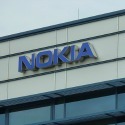
Nokia continues to expand its open radio network access (RAN) research activities, this time announcing a new partnership with Brazil's Telecommunications Research and Development Center (CPQD).
The partners plan to collaborate on the joint development of 5G applications and solutions based on the near-real-time RAN Intelligent Controller (RIC), which complies with specifications of the O-RAN Alliance.
Specifically, Nokia and CPQD intend to focus on well-known 5G use cases such as fixed wireless access (FWA) for home broadband services, smart city services, industrial Internet of Things (IoT), and critical networks – and how such use cases can be applied to the Brazilian market.
As described by Nokia, the RIC is a virtualized 5G optimization technology that adds programmability to the RAN and enables the application of artificial intelligence (AI) and machine learning (ML) as well as new services.
Nokia said the partnership will make use of its service enablement platform (SEP), which it said combines the capabilities of the RIC and multi-access edge computing (MEC). The aim is to create services that are positioned at the network edge – in other words, services that are closer to the customer.
Growing open RAN agenda
For Nokia, the collaboration marks a further step in its goal to "do whatever it takes to lead in 5G," as stated by its new CEO, Pekka Lundmark, in December. Determined to revitalize the mobile business after mishaps under previous management, Lundmark has named open RAN as one of his priorities.
CPQD, described as an independent research body even though it is affiliated with the Brazilian government, already has some experience in this field. The organization joined the OpenAirInterface Software Alliance (OSA) in June 2020 and also works with the Telecom Infra Project (TIP) on the development of open and interoperable networks. According to Nokia, it is the first research center in Latin America to work on applications for the RIC platform.
Want to know more about 5G? Check out our dedicated 5G content channel here on Light Reading.
Nokia has generally been more enthusiastic about open RAN than chief rivals Ericsson and Huawei. However, one risk is that open RAN does not take off as quickly as its proponents hope.
Omdia, a sister company to Light Reading, expects the new technology to generate about $3.2 billion in 2024. This would give open RAN only about 10% of the total RAN market by the mid-2020s.
Related posts:
— Anne Morris, contributing editor, special to Light Reading
Read more about:
EuropeAbout the Author(s)
You May Also Like











